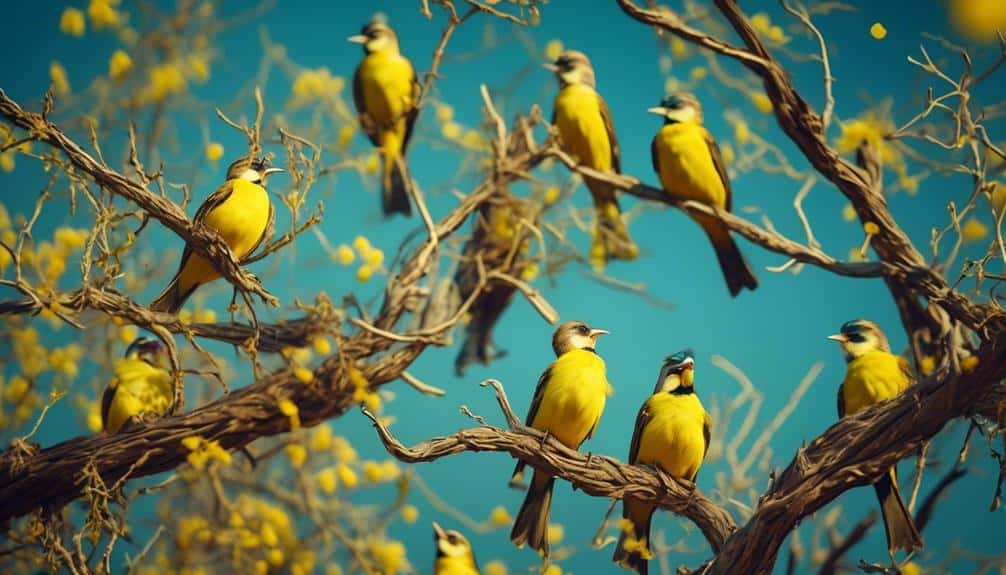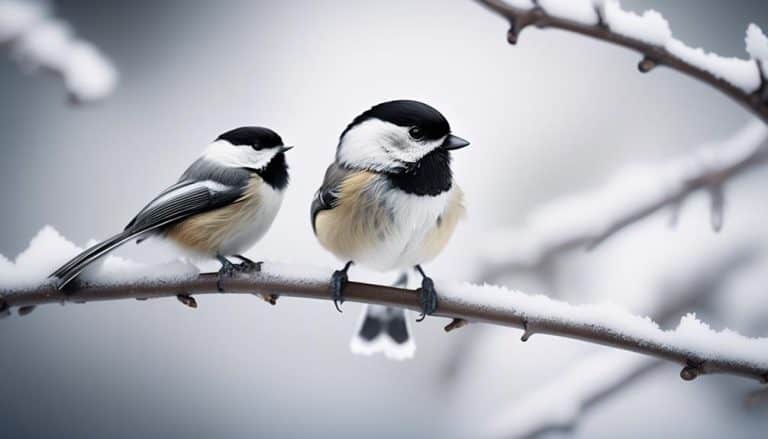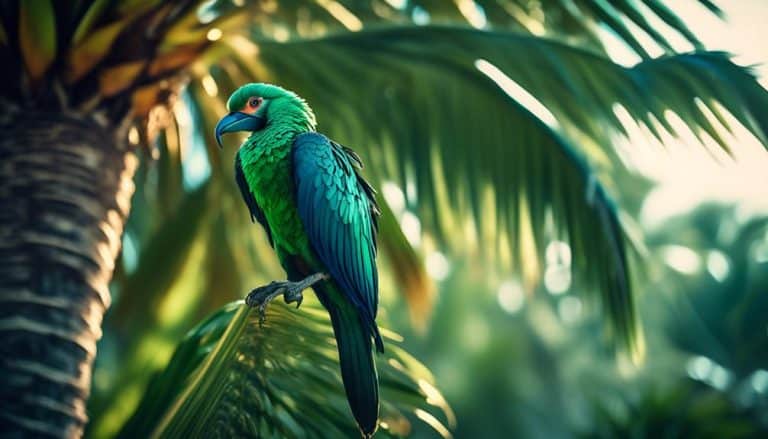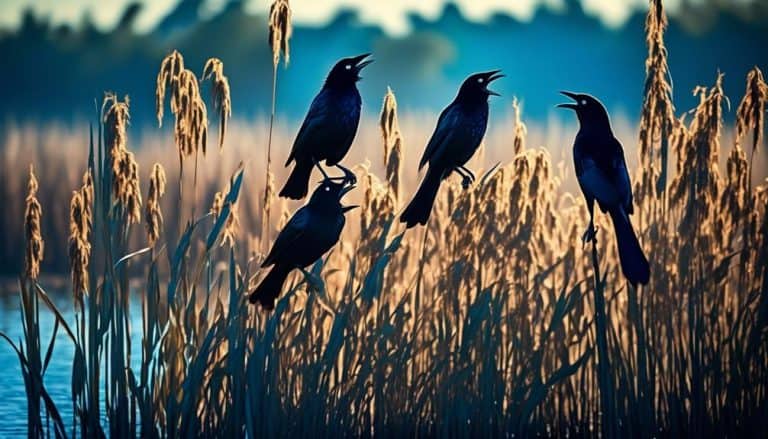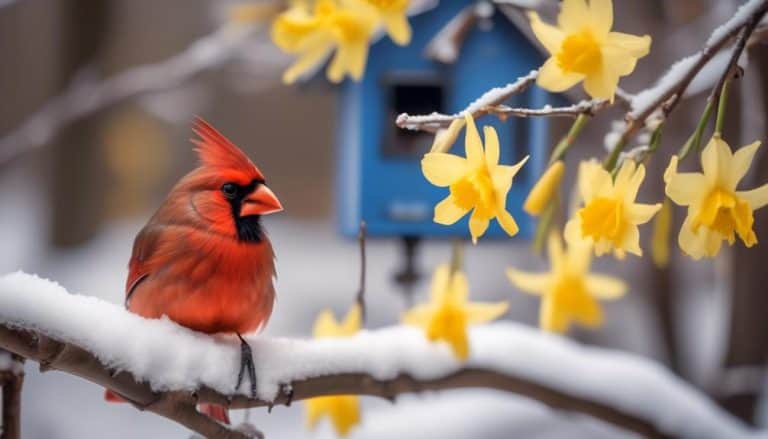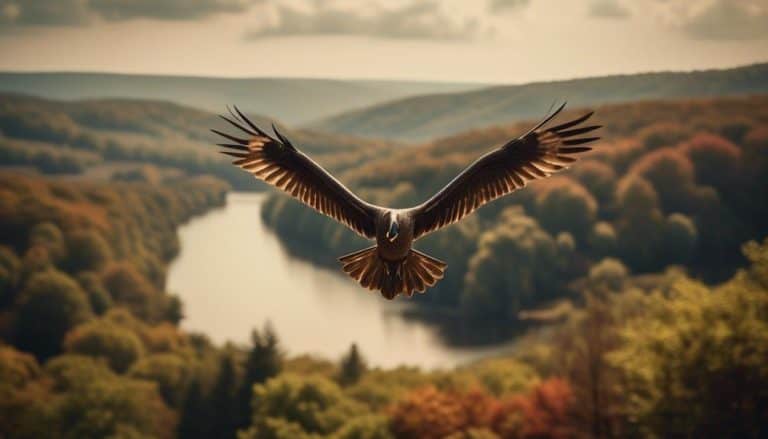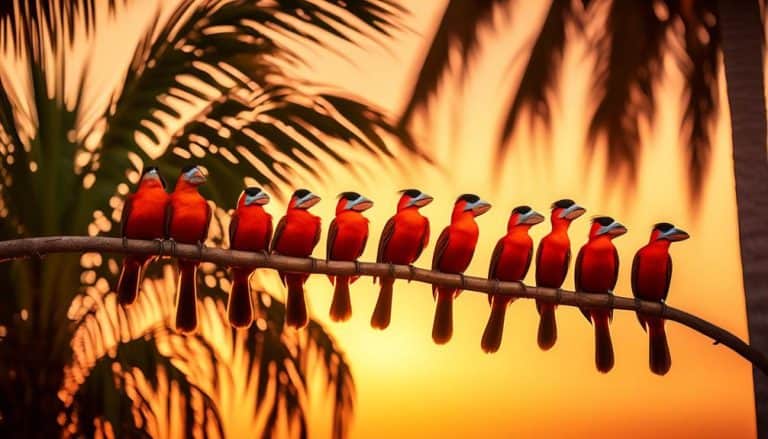Yellow-breasted birds in Texas are a fascinating and vibrant part of the avian community. These beautiful birds, with their bright plumage and melodic songs, capture the attention of both bird enthusiasts and casual observers alike.
From their distinct markings to their enchanting behaviors, there is much to discover about these captivating creatures. So, let's embark on a journey to explore the world of yellow-breasted birds in Texas and unravel the mysteries that surround them.
Identification of Yellow-Breasted Birds
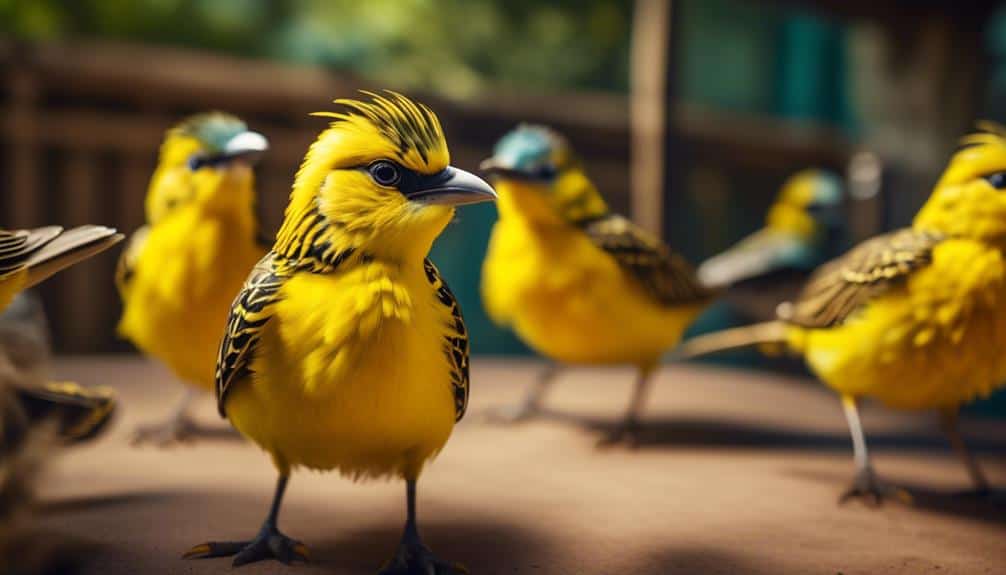
To accurately identify yellow-breasted birds in Texas, careful observation of their physical characteristics and behavior is essential. There are common misconceptions about yellow-breasted birds, with many people mistakenly assuming that all birds with yellow breasts belong to the same species. However, there are several distinguishing features that can help differentiate between different species of yellow-breasted birds.
Firstly, the size of the bird can be a key characteristic. Some species, like the Yellow Warbler, are small and compact, while others, like the Western Tanager, are larger and more robust. Additionally, the color pattern on the bird's chest is important to note. Some species have a solid bright yellow breast, while others may have streaks or patches of yellow mixed with other colors.
Furthermore, observing the bird's behavior can provide valuable clues for identification. Some species of yellow-breasted birds, like the American Goldfinch, are typically found in flocks, while others, like the Hooded Oriole, are solitary birds. Additionally, certain species may have distinct feeding or nesting habits.
Habitat and Range of Yellow-Breasted Birds
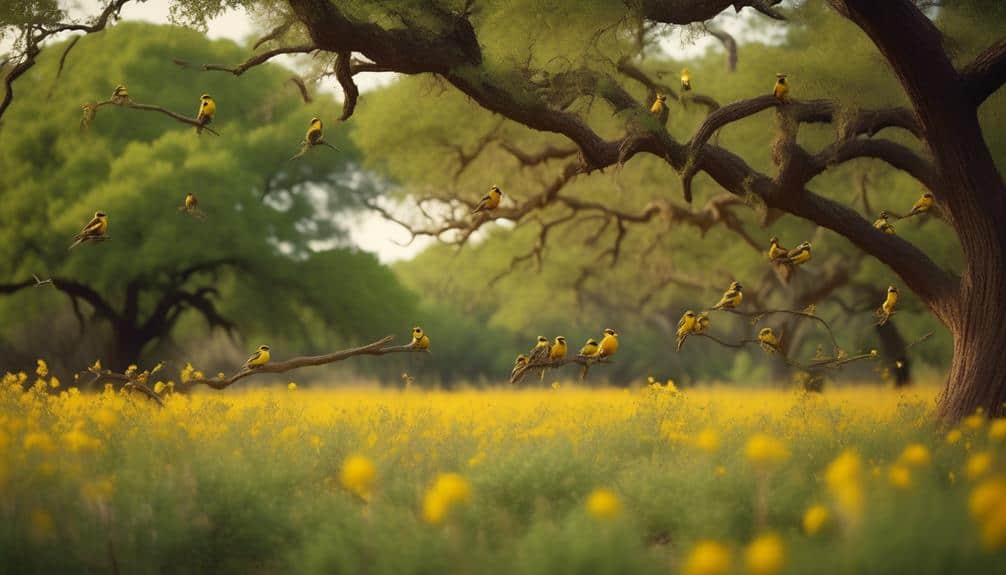
As we explore the habitat and range of yellow-breasted birds in Texas, it is important to consider the environmental factors that influence their distribution and behavior. Yellow-breasted birds are a diverse group of species found throughout the state, each with its own unique ecological requirements. To better understand their habitat preferences, population trends, and conservation measures, let's examine the table below:
| Species Name | Preferred Habitat | Range |
|---|---|---|
| Yellow Warbler | Riparian areas and wetlands | Statewide, but more common in |
| eastern and coastal regions | ||
| Yellow-throated | Mature deciduous and mixed | Throughout Texas, but |
| Warbler | forests | particularly abundant in the |
| Pineywoods region | ||
| Golden-cheeked | Ashe juniper-oak woodlands | Central Texas Hill Country, |
| Warbler | primarily in Travis and | |
| Williamson counties |
The population trends of these yellow-breasted bird species in Texas vary. While the Yellow Warbler population remains stable, the Yellow-throated Warbler is experiencing a slight decline due to habitat loss and fragmentation. On the other hand, the Golden-cheeked Warbler is listed as endangered and faces significant conservation challenges. Efforts are underway to protect and restore their preferred habitat, as well as educate the public about the importance of preserving these unique species.
Breeding and Nesting Habits
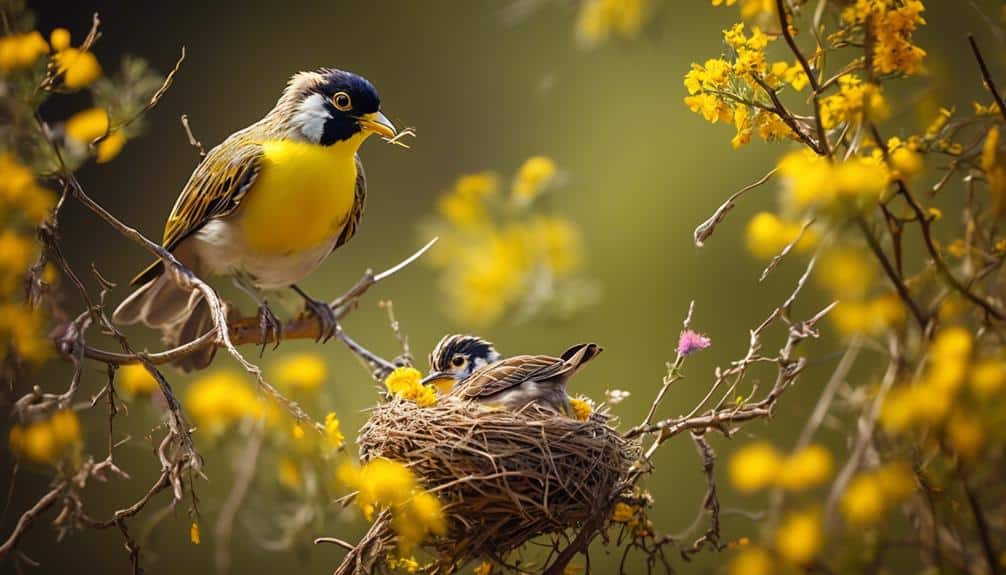
Yellow-breasted birds in Texas exhibit distinct breeding and nesting habits that are influenced by their specific ecological requirements and environmental conditions.
The breeding season for these birds typically occurs during the spring and summer months when food availability and weather conditions are favorable. During this time, males engage in elaborate courtship displays to attract females. They sing complex songs and perform aerial displays to demonstrate their fitness as potential mates.
When it comes to nesting, yellow-breasted birds construct their nests using a variety of materials. They're known to use twigs, grasses, leaves, and even feathers to build sturdy and well-insulated nests. The choice of nesting materials depends on the availability in their habitat.
The nests are usually built in trees or shrubs, providing protection from predators and harsh weather conditions. The female takes the lead in constructing the nest, while the male assists by providing the necessary materials. The nests are often cup-shaped and lined with softer materials like feathers or fur for added comfort.
Once the nest is complete, the female lays her eggs, typically ranging from two to five in number. She then incubates the eggs, while the male assists by bringing food to the nest. The incubation period lasts for about two weeks, after which the chicks hatch.
Migration Patterns and Behavior
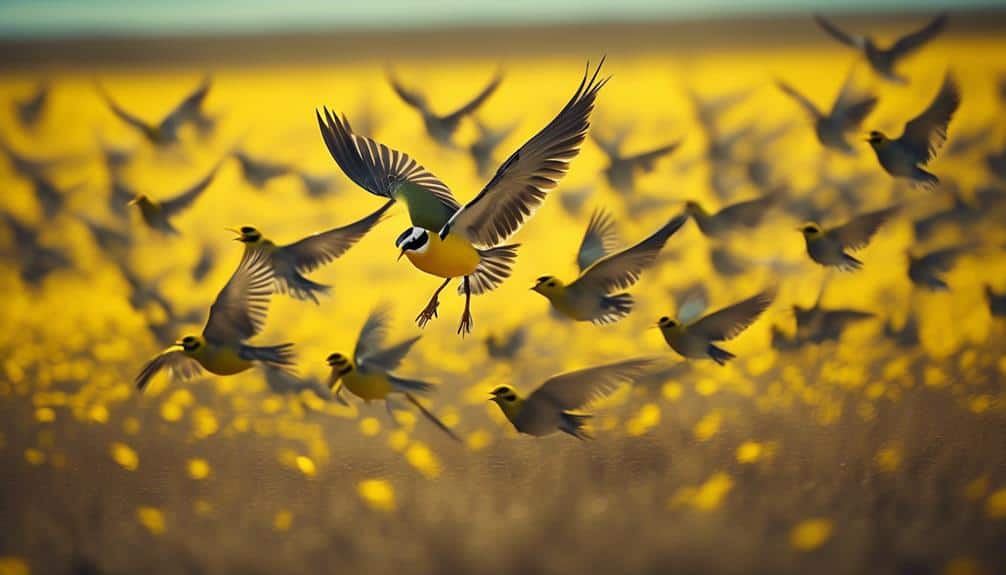
Migration is a vital behavior for yellow-breasted birds in Texas, allowing them to adapt to changing environmental conditions and find suitable habitats for feeding and breeding. These birds undertake long and arduous journeys, following specific migration routes that have been passed down through generations. Their migration patterns are a fascinating display of precision and instinct.
Timing: Yellow-breasted birds usually begin their migration in the early spring, when the weather starts to warm up and food becomes more abundant. They time their departure to coincide with the availability of insects and flowering plants, which provide essential nourishment during their journey.
Navigation: These birds possess an innate ability to navigate over vast distances. They rely on a combination of celestial cues, such as the position of the sun and stars, and environmental cues, such as landmarks and magnetic fields, to guide them along their migration routes.
Feeding habits: During migration, yellow-breasted birds adjust their feeding habits to sustain their energy levels. They're known to make frequent stops along their journey to feed on fruits, seeds, and insects. These pit stops are essential for replenishing their energy stores and ensuring their survival during the long migration.
Understanding the migration patterns and behavior of yellow-breasted birds is crucial for conservation efforts, as it helps identify critical stopover sites and protect their habitats along their migration routes. By studying these fascinating creatures, we can gain valuable insights into the interconnectedness of ecosystems and the importance of preserving their habitats.
Conservation Efforts and Threats to Yellow-Breasted Birds
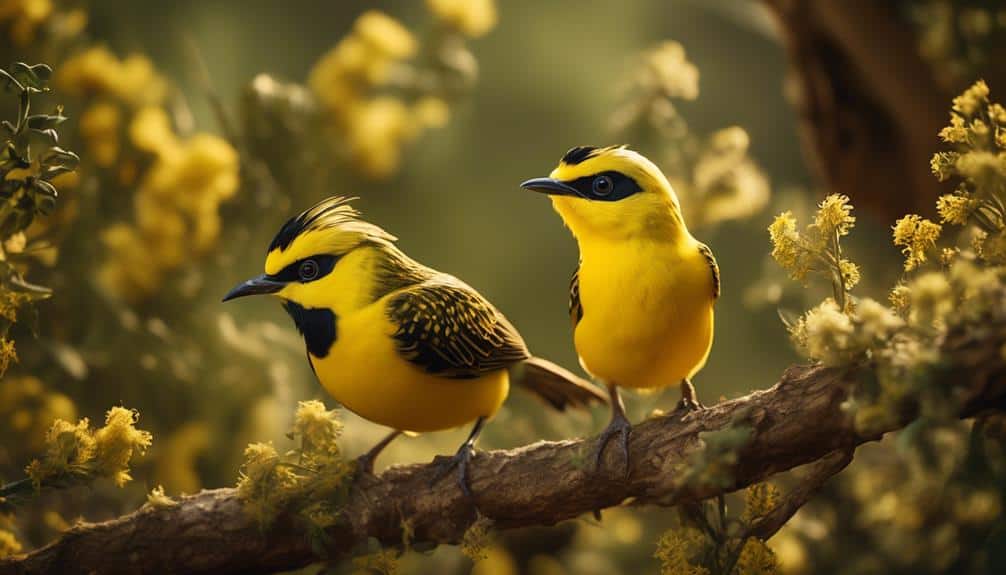
Understanding the migration patterns and behavior of yellow-breasted birds is crucial for their conservation, as it allows us to address the threats they face and implement effective measures to protect their habitats.
Conservation efforts for yellow-breasted birds in Texas face several challenges, which have contributed to their population decline in recent years.
One of the main reasons for the decline in yellow-breasted bird populations is habitat loss. Urbanization and agricultural expansion have resulted in the destruction and fragmentation of their natural habitats. This loss of suitable nesting and foraging areas has greatly impacted their ability to find food and raise their young.
Another significant threat to yellow-breasted birds is climate change. Rising temperatures and altered precipitation patterns can disrupt the timing of their migrations and the availability of food sources along their routes. This can lead to decreased breeding success and survival rates.
Additionally, yellow-breasted birds are vulnerable to predation by invasive species, such as feral cats and rats. These predators can have a significant impact on their populations, especially when their numbers are already low.
To address these conservation challenges, efforts are being made to protect and restore the habitats of yellow-breasted birds. This includes implementing strategies to reduce habitat fragmentation, such as creating wildlife corridors and protected areas. Additionally, educating the public about the importance of preserving these birds and their habitats is crucial for their long-term conservation.
Frequently Asked Questions
How Do Yellow-Breasted Birds Communicate With Each Other?
Birds communicate with each other through a combination of vocalizations and visual displays. These signals help them convey important information such as mating availability, territory boundaries, and warning calls to their flock members.
What Is the Average Lifespan of Yellow-Breasted Birds in Texas?
The average lifespan of yellow-breasted birds in Texas varies depending on environmental factors and predation risks. Breeding behaviors play a significant role in determining their survival rates, influencing the overall population dynamics of these beautiful avian species.
Do Yellow-Breasted Birds Have Any Predators in Their Habitat?
Yes, yellow-breasted birds do have predators in their habitat. They rely on communication to alert each other of potential threats, such as predators that may pose a danger to their survival.
How Many Eggs Do Yellow-Breasted Birds Lay in a Single Nesting Season?
I'm not sure about the nesting habits of yellow-breasted birds, but I can tell you that they migrate and have a unique migration pattern. As for the number of eggs they lay, I'll have to research that.
Are There Any Specific Conservation Organizations Working Towards the Protection of Yellow-Breasted Birds in Texas?
Yes, there are specific conservation organizations working towards the protection of yellow-breasted birds in Texas. These organizations are focused on implementing conservation initiatives to address threats such as habitat loss and ensure the survival of these bird species.
Conclusion
In conclusion, the yellow-breasted birds of Texas are a remarkable species with unique characteristics and behaviors. Their vibrant yellow feathers make them a visual delight for bird enthusiasts.
However, despite their beauty, these birds face numerous threats that endanger their population. It's crucial that we continue our conservation efforts to protect their habitats and ensure their survival.
Only through collective action can we preserve the splendor of these remarkable creatures for future generations to appreciate.

